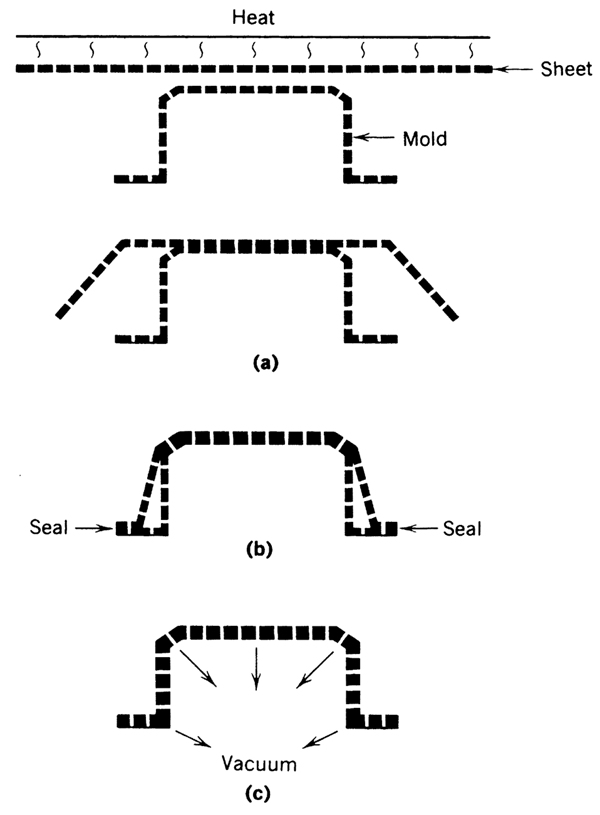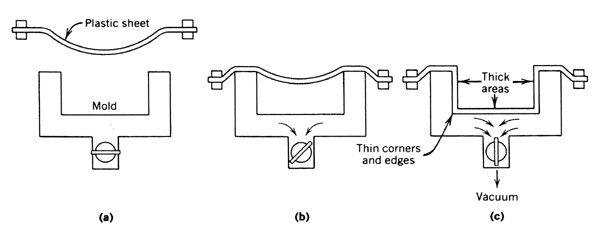





Note: The following index list will take you to separate articles pertaining to the specific subject.
return to Plastic Information and Processes
Introduction:
The basic process as it is known today has been developing for over 40 years, but historians have found that the Pharaoh's of Egypt developed a type of thermoforming by softening tortoise shells with hot oils to form food utensils.
Because softening by heat and curing by the removal of heat are involved, the technique is applicable only to thermoplastic materials and not to thermosets.
Most plastics are usable and must be in sheet or film form. This process will produce blister packaging, trays of all types, drinking cups & food packaging, computer housings, interior and exterior automotive parts.
Process:
Sheets of pre-extruded rigid plastic are heated to its particular processing temperature and form the hot and flexible material against the contours of a mold by mechanical means. (ex. tools, plugs, solid molds, air pressure created by pulling a vacuum or using the pressures of compressed air) After the hot plastic solidifies again, its shape conforms to that of the mold. Trimming is usually necessary to put the part in final form. Vacuum forming is done at atmospheric pressure (14.2 psi.).
A variation of this process, pressure forming, incorporates the use of a pressure box built around the tool which increases the pressure far beyond atmospheric. Greater surface definition in parts can thus be achieved.
Twin sheet forming is another variation in the thermoforming process. Instead of forming two halves and bonding the halves together as with conventional thermoforming, twin-sheet thermoforming utilizes top and bottom molds into which two heated sheets are formed and then welded together under pressure to form a hollow part.
Thermoforming on a male mold.

Thermoforming on a female mold.

![]() Return to the Enginnering Resource Center Home Page. (ERC)
Return to the Enginnering Resource Center Home Page. (ERC)